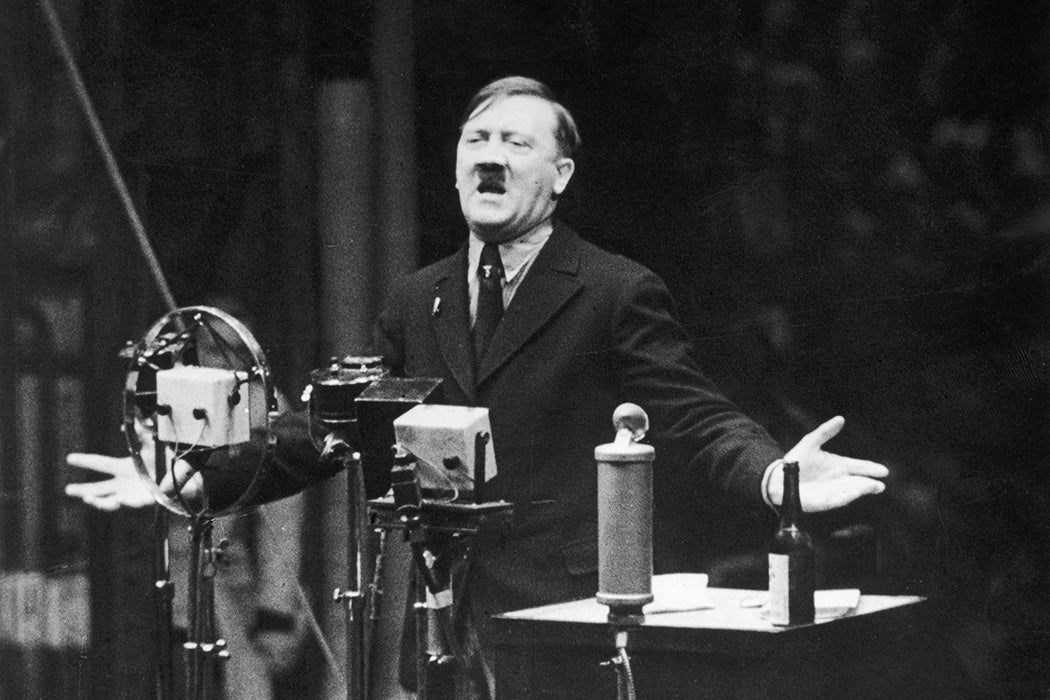A newspaper publishes a perhaps poorly thought-out comparison involving Hitler, sparking weeks of outrage before eventually caving in a way that permanently shifts its editorial policies. This sounds like a “cancel culture” event of the internet age, but, as journalism historian Ralph Frasca writes, this story played out in Baltimore…in the 1930s.
On June 18, 1934, Frasca writes, Baltimore Sun international correspondent S. Miles Bouton sketched out his impressions of Germany’s new chancellor and soon-to-be autocrat Adolf Hitler. Toward the end of the piece, he made the comparison that would kick up the controversy:
It has seemed to me at times that there is a kinship between him and Ignatius Loyola. One finds in both men the same complete faith in their mission, the same readiness and determination to exercise their power with utter ruthlessness and brutality in order to carry out that mission. No consideration of personal profit or glory ever entered Loyola’s mind, and I believe the same can be said of Hitler.
St. Ignatius Loyola was the sixteenth-century founder of the Jesuit religious order—and the patron saint of Baltimore’s archdiocese. Frasca explains that Baltimore Archbishop Michael Joseph “Iron Mike” Curley was not pleased. Later, Curley described Bouton in a letter as “the world’s greatest nitwit in the field of international journalism” and noted that he was eager to go after the Sun.
Curley did so in the archdiocese’s mouthpiece, the Baltimore Catholic Review. He claimed that the insult to Ignatius was an attack on modern Jesuits and suggested that to make such an inept comparison was to “insinuate that thousands of readers of The Sun are dullards.” Over the next week, Catholic readers wrote to the Sun with complaints. The paper declined to respond in print, though publisher Paul Patterson did privately express regret to Curley and other local Catholic leaders.
Frasca writes that Curley turned up the heat on June 29, writing an open letter at the top of the first page of the Review. The letter explicitly insisted that it was not a call for a boycott but also noted “that our Catholic priests and people have no obligation in law or morals to buy The Sun or to deal with The Sun advertisers.” That issue of the Review and the two that followed were filled with content related to the controversy.
Weekly Newsletter
Facing a drop in subscribers and abandonment by some advertisers, on July 19 the Sun sort-of-apologized, calling Bouton’s comparison an “error.” The Review took it as a victory. In a letter shortly after the Bouton kerfuffle, Curley wrote, “Anyway, the upshot of the whole thing is that the Sun is going to be mighty careful in the future.”
That proved to be true. A few years later, when the Sun’s coverage of the Spanish Civil War favored the Republicans over Franco’s largely Catholic forces, it only took a small push from the Review for it to change its editorial stance—just the outcome Curley had hoped for.
Support JSTOR Daily! Join our new membership program on Patreon today.







